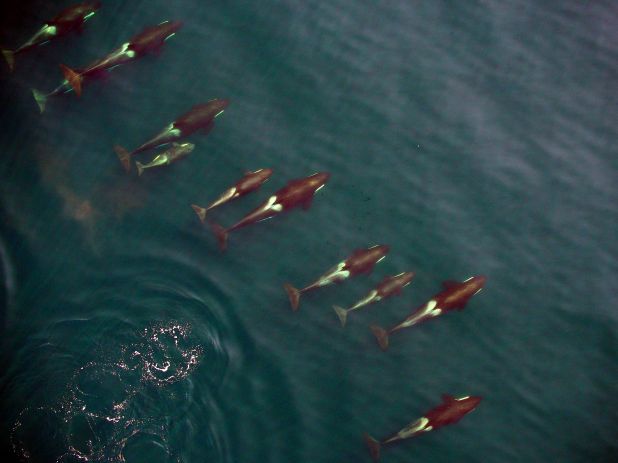Photo Credit Vancouver Aquarium and NOAA
For the first time ever, scientists have used an unmanned aerial vehicle to monitor killer whales in the wild.
For the groundbreaking new study, researchers at the Vancouver Aquarium and NOAA used a modified APH-22 marine hexacopter to film the whales in their natural habitat in the Johnstone Strait, along the north east coast of Vancouver Island in British Columbia. Researchers note that while the drone may seem loud in the video, the noise can be barely heard from 10 meters away and the whales showed no reaction to the flying object.
Researchers will now use the 30,000 photographs taken during 60 flights to assess northern resident killer whale health. From above, the scientists can assess their girth and determine whether the killer whales are sick or pregnant. In fact the photographs have already revealed several pregnancies, previously undetectable, according to the Vancouver Aquarium. The aquarium says that this information will help guide management of the protected northern resident killer whale population, as well as the endangered southern resident population.
Use of the UAV was authorized by a marine mammal research license issued by Fisheries and Oceans Canada, a special flight certificate from Transport Canada, and animal care permits.
Check out the video below of the Killer Whale pod:
SEE ALSO: Video Captures Killer Whales Playing in Wake
Unlock Exclusive Insights Today!
Join the gCaptain Club for curated content, insider opinions, and vibrant community discussions.

 Join The Club
Join The Club











